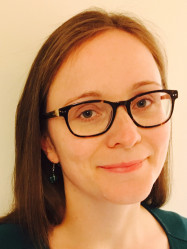Summary
You can find our group website with much more information at: jelfs-group.org
We use computational approaches towards enabling functional molecular material discovery. Specifically, we investigate predicting these materials’ assembly as individual units and how this then affects self-assembly and properties. We aim to apply this to large scale computational screening of precursor libraries, creating databases of viable, functional materials. Our strong ongoing links with synthetic collaborators allow synthetic realisation of the predictions. We focus on porous molecular materials, organic electronics and membrane materials. We are currently funded by the Royal Society, the Engineering and Physical Sciences Research Council (EPSRC), the Leverhulme Trust and the European Research Council (ERC), as well as industry.
Selected Publications
Journal Articles
Thompson KA, Mathias R, Kim D, et al., 2020, N-Aryl-linked spirocyclic polymers for membrane separations of complex hydrocarbon mixtures, Science, Vol:369, ISSN:0036-8075, Pages:310-315
Yuan Q, Santana Bonilla A, Zwijnenburg MA, et al., 2020, Molecular generation targeting desired electronic properties via deep generative models, Nanoscale, Vol:12, ISSN:2040-3364, Pages:6744-6758
Tan R, Wang A, Malpass-Evans R, et al., 2020, Hydrophilic microporous membranes for selective ion separation and flow-battery energy storage, Nature Materials, Vol:19, ISSN:1476-1122, Pages:195-202
Miklitz M, Turcani L, Greenaway RL, et al., 2020, Computational discovery of molecular C60 encapsulants with an evolutionary algorithm, Communications Chemistry, Vol:3, ISSN:2399-3669
Jelfs K, Greenaway RL, Santolini V, et al., 2019, From concept to crystals via prediction: multi‐component organic cage pots by social self‐sorting, Angewandte Chemie - International Edition, Vol:131, ISSN:1433-7851, Pages:16421-16427
Turcani L, Greenaway RL, Jelfs KE, 2019, Machine learning for organic cage property prediction, Chemistry of Materials, Vol:31, ISSN:0897-4756, Pages:714-727
Miklitz M, Jelfs K, 2018, pywindow: automated structural analysis of molecular pores, Journal of Chemical Information and Modeling, Vol:58, ISSN:1549-9596, Pages:2387-2391
Berardo E, Miklitz M, Turcani L, et al., 2018, An evolutionary algorithm for the discovery of porous organic cages, Chemical Science, Vol:9, ISSN:2041-6520, Pages:8513-8527
Turcani L, Berardo E, Jelfs KE, 2018, stk : A Python toolkit for supramolecular assembly, Journal of Computational Chemistry, Vol:39, ISSN:0192-8651, Pages:1931-1942
Greenaway R, Santolini V, Bennison MJ, et al., 2018, High-throughput discovery of organic cages and catenanes using computational screening fused with robotic synthesis, Nature Communications, Vol:9, ISSN:2041-1723, Pages:1-11
Rice B, LeBlanc LM, Otero-de-la-Roza A, et al., 2018, A computational exploration of the crystal energy and charge-carrier mobility landscapes of the chiral [6]helicene molecule, Nanoscale, Vol:10, ISSN:2040-3364, Pages:1865-1876

